 W
WThe Republic of Serbian Krajina or Serb Republic of Krajina, known as the Serbian Krajina or simply Krajina, was a self-proclaimed Serb proto-state, a territory within the newly independent Republic of Croatia, which it defied, and which was active during the Croatian War of Independence (1991–95). It was not recognized internationally. The name Krajina ("Frontier") was adopted from the historical Military Frontier of the Habsburg Monarchy and Austria-Hungary, which had a substantial Serb population and existed up to the late 19th century. The RSK government waged a war for ethnic Serb independence from Croatia and unification with FR Yugoslavia and Republika Srpska.
 W
WMilan Babić was a Croatian Serb politician who served as the first president of the Republic of Serbian Krajina, a self-proclaimed state largely populated by Serbs of Croatia that wished to break away from Croatia during the Croatian War of Independence.
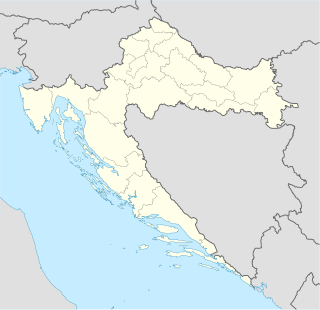 W
WThe Baćin massacre was the killing of 83 civilians just outside the village of Baćin, near Hrvatska Dubica, committed by Croatian Serb paramilitaries. The killings took place on 21 October 1991 during the Croatian War of Independence. Most of the civilians were Croats, but they also included two ethnic Serbs, taken from Hrvatska Dubica, Baćin and the nearby village of Cerovljani. The civilians were killed in the area of Krečane, at the very bank of the Una River, and their bodies were left unburied for two weeks. Most of them were subsequently bulldozed into a shallow mass grave, while a number of the bodies were thrown into the river.
 W
WThe Bruška massacre took place on 21 December 1991 in Bruška, a small village near the Croatian town of Benkovac when Serbian paramilitaries executed 10 civilians in the hamlet of Marinovići. Nine were members of the Marinović family and one was a Serb neighbor. They were led out of the house after playing cards and shot on the spot by members of a paramilitary group called "Knindže".
 W
WThe Republic of Serbian Krajina or Serb Republic of Krajina, known as the Serbian Krajina or simply Krajina, was a self-proclaimed Serb proto-state, a territory within the newly independent Republic of Croatia, which it defied, and which was active during the Croatian War of Independence (1991–95). It was not recognized internationally. The name Krajina ("Frontier") was adopted from the historical Military Frontier of the Habsburg Monarchy and Austria-Hungary, which had a substantial Serb population and existed up to the late 19th century. The RSK government waged a war for ethnic Serb independence from Croatia and unification with FR Yugoslavia and Republika Srpska.
 W
WThe Dalj massacre was the killing of 56 or 57 Croats in Dalj, Croatia on 1 August 1991, during the Croatian War of Independence. In addition to civilian victims, the figure includes 20 Croatian policemen, 15 Croatian National Guard troops and four civil defencemen who had been defending the police station and water supply building in the village. While some of the policemen and the ZNG troops died in combat, those who surrendered were killed after they became prisoners of war. They tried to fight off an attack by the Croatian Serb SAO Eastern Slavonia, Baranja and Western Syrmia Territorial Defence Forces, supported by the Yugoslav People's Army and the Serb Volunteer Guard paramilitaries. The SAO SBWS was declared an autonomous territory in eastern Croatia following the Battle of Borovo Selo just to the south of Dalj.
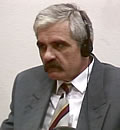 W
WSlavko Dokmanović was a Croatian Serb who was charged with grave breaches of the Geneva Conventions, violation of the customs of war and crimes against humanity by the International Criminal Tribunal for the Former Yugoslavia (ICTY) for his actions in the Vukovar massacre while he served as the city's mayor.
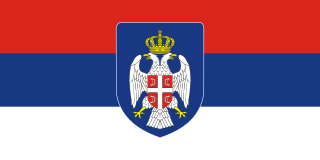 W
WEastern Slavonia, Baranja and Western Syrmia was a short-lived Serb parallel entity in the territory of Croatia. It encompassed the same territory as the SAO Eastern Slavonia, Baranja and Western Syrmia, and which as an exclave had been merged into the self-proclaimed Republic of Serbian Krajina. When the latter entity was defeated at the end of the Croatian War of Independence in 1995, the territory of Eastern Slavonia remained in place for another three years in which it experienced significant changes ultimately leading to peaceful reintegration via the United Nations Transitional Administration for Eastern Slavonia, Baranja and Western Sirmium (UNTAES).
 W
WThe Erdut killings were a series of murders of 37 Hungarian and Croat civilians in the village of Erdut, Croatia committed by Croatian Serb forces and Serb Volunteer Guard paramilitaries between November 1991 and June 1992, during the Croatian War of Independence. Twenty-two Hungarians and 15 Croats were killed. The first killings occurred on 10 November 1991, when twelve civilians died. Eight more were killed over the following several days. Five more civilians were killed on 10 December, and another seven on 16 December. Four others were killed on 21 February 1992 and the final one was killed on 3 June. The bodies of these victims were either buried in mass graves or thrown into nearby wells.
 W
WThe Gornje Jame massacre was the killing of fifteen Croat civilians in Gornje Jame, a village near Glina, by the Serbian paramilitary force called Šiltovi.
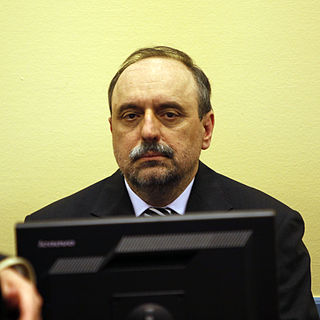 W
WGoran Hadžić was a Croatian Serb nationalist politician of the self-proclaimed Republic of Serbian Krajina, in office during the Croatian War of Independence. He was accused of crimes against humanity and of violation of the laws and customs of war by the International Criminal Tribunal for the former Yugoslavia.
 W
WThe Joševica massacre was a war crime committed by the paramilitary forces of the Krajina Serbs in the Croatian village of Joševica during the Croatian War of Independence. The atrocities took place on December 16 of 1991.
 W
WThe 1991 siege of Kijevo was one of the earliest conflicts in the Croatian War of Independence. The 9th Corps of the Yugoslav People's Army led by Colonel Ratko Mladić and the forces of the Serbian Autonomous Oblast (region) of Krajina under Knin police chief Milan Martić besieged the Croat-inhabited village of Kijevo in late April and early May 1991. The initial siege was lifted after negotiations that followed major protests in Split against the JNA.
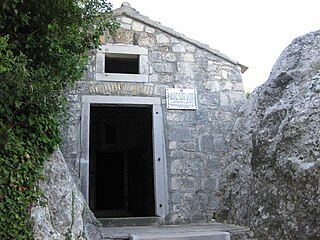 W
WKnin camp was a detention camp run by the rebel Serb army in Knin in the puppet state of Republika Srpska Krajina, that held Croatian detainees, soldiers and civilians, from 1991 until 1992, during the Croatian War of Independence. It consisted out of at least two facilities. The ICTY stated that a prison in Knin, run by the Yugoslav People's Army, held approximately 150 detainees, while the old hospital in Knin, run by "Martic's Militia", held approximately 120 detainees. At least two prisoners perished.
 W
WŽivko Korać, was a soldier of the self-proclaimed Republic of Serbian Krajina. Živko became prominent after Operation Storm, as he continued resisting Croatia for 5.5 years after the fall of Krajina. On 14 January 2001, in Banija's winter forests, the Croatian authorities began searching for Živko, including the Croatian Police, army, and local hunting groups. After hours of heavy fighting, Živko pulled the pin of his last grenade and committed suicide
 W
WThe Kostrići massacre was the killing 16 Croat civilians in the village of Kostrići, near Hrvatska Kostajnica by Serb paramilitary unit "Kaline Komogovina" on 15 November 1991 during the Croatian War of Independence. Among those killed were two children. The oldest victim was 93 years old.
 W
WThe dinar was the currency in the Republic of Serbian Krajina between 1992 and 1994.
 W
WThe Republic of Serbian Krajina or Serb Republic of Krajina, known as the Serbian Krajina or simply Krajina, was a self-proclaimed Serb proto-state, a territory within the newly independent Republic of Croatia, which it defied, and which was active during the Croatian War of Independence (1991–95). It was not recognized internationally. The name Krajina ("Frontier") was adopted from the historical Military Frontier of the Habsburg Monarchy and Austria-Hungary, which had a substantial Serb population and existed up to the late 19th century. The RSK government waged a war for ethnic Serb independence from Croatia and unification with FR Yugoslavia and Republika Srpska.
 W
WThe Republic of Serbian Krajina or Serb Republic of Krajina, known as the Serbian Krajina or simply Krajina, was a self-proclaimed Serb proto-state, a territory within the newly independent Republic of Croatia, which it defied, and which was active during the Croatian War of Independence (1991–95). It was not recognized internationally. The name Krajina ("Frontier") was adopted from the historical Military Frontier of the Habsburg Monarchy and Austria-Hungary, which had a substantial Serb population and existed up to the late 19th century. The RSK government waged a war for ethnic Serb independence from Croatia and unification with FR Yugoslavia and Republika Srpska.
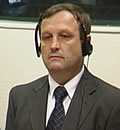 W
WMilan Martić is a Croatian Serb politician who served as the president of the unrecognized Republic of Serbian Krajina between 1994 and 1995, during the Croatian War of Independence.
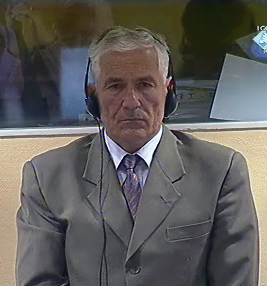 W
WMile Mrkšić was a colonel of the Yugoslav People's Army (JNA) in charge of the unit involved in the Battle of Vukovar during the Croatian War of Independence in 1991. He was convicted for not preventing the mass killing of 264 Croats that followed the fall of Vukovar, and sentenced to 20 years.
 W
WThe Saborsko massacre was the killing of 29 Croat residents of the village of Saborsko on 12 November 1991, following the seizure of the village in a Yugoslav People's Army and Croatian Serb offensive during the Croatian War of Independence. The fall of the town occurred as part of a JNA and Croatian Serb operation to capture a Croatian-held pocket centered on the town of Slunj, southeast of Karlovac. While the bulk of the civilian population fled with the surviving Croatian forces, those who remained in Saborsko were rounded up and either killed or expelled. The bodies of the victims were retrieved from two mass graves and several individual graves in 1995.
 W
WThe Serbian Autonomous Oblast of Eastern Slavonia, Baranja and Western Syrmia was a self-proclaimed Serbian Autonomous Oblast (SAO) in eastern Croatia, established during the Yugoslav Wars. It was one of three SAOs proclaimed on the territory of Croatia. The oblast included parts of the geographical regions of Slavonia, Baranja and Syrmia.
 W
WThe Serbian Autonomous Oblast of Krajina or SAO Krajina was a self-proclaimed Serbian autonomous region (oblast) within modern-day Croatia. The territory consisted of majority-Serbian municipalities of the Republic of Croatia that declared autonomy in October 1990. It was formed as the SAO Kninska Krajina, but, upon inclusion of additional Serb-populated areas, changed its name simply to SAO Krajina. In 1991 the SAO Krajina declared itself the Republic of Serbian Krajina, and subsequently included the other two Serbian SAOs in Croatia, the SAO Western Slavonia and the SAO Eastern Slavonia, Baranja and Western Syrmia.
 W
WThe Serbian Autonomous Oblast of Western Slavonia was a Serbian self-proclaimed autonomous region (oblast) within Croatia. It was formed on 12 August 1991 and was subsequently included into Republic of Serbian Krajina. It was eliminated and reintegrated into Croatia in May 1995, during Operation Flash.
 W
WThe Vance plan was a peace plan negotiated by the former United States Secretary of State Cyrus Vance in November 1991 during the Croatian War of Independence. At that time, Vance was the Special Envoy of the Secretary-General of the United Nations; he was assisted by United States diplomat Herbert Okun during the negotiations. The plan was designed to implement a ceasefire, demilitarize parts of Croatia that were under the control of Croatian Serbs and the Yugoslav People's Army (JNA), allow the return of refugees, and create favourable conditions for negotiations on a permanent political settlement of the conflict resulting from the breakup of Yugoslavia.
 W
WThe Široka Kula massacre was the killing of 41 civilians in the village of Široka Kula near Gospić, Croatia during the Croatian War of Independence. The killings began on 13 October 1991 and continued until late October. They were perpetrated by the Croatian Serb SAO Krajina police and generally targeted ethnic Croat civilians in Široka Kula. Several victims were ethnic Serbs suspected by the police of collaboration with Croatian authorities. Most of the victims' bodies were thrown into the Golubnjača Pit, a nearby karst cave.
 W
WThe Škabrnja massacre was the killing of 62 Croatian civilians and five prisoners of war by Serbian Autonomous Oblast Krajina Territorial Defence troops and the Yugoslav People's Army (JNA) in the villages of Škabrnja and Nadin northeast of Zadar on 18–19 November 1991, during the Croatian War of Independence. The massacre occurred shortly after an agreement to evacuate Zadar's JNA garrison following an increase in fighting between the Croatian National Guard and the JNA. Most of the killings were committed by SAO Krajina troops which followed the leading armoured JNA units fighting their way into Škabrnja on 18 November. During the initial attack, the attacking force employed a human shield of captured civilians forced to walk in front of armoured vehicles. Most of the civilian population fled the village and about 120–130 were captured by the JNA and detained in the village school and kindergarten. However, others who took shelter in basements were killed in or just outside their homes. A portion of those killed in the massacre were buried in a mass grave in Škabrnja, while dozens of bodies were turned over to Croatian authorities.
 W
WVukašin Šoškoćanin was a Croatian Serb war commander active during the Croatian War.
 W
WSavo Štrbac is a Croatian Serb lawyer and author. He is best-known for being the director of the Serbian NGO "Veritas" that documents with the history of the Republic of Serbian Krajina and locates missing war victims.
 W
WThe Vukovar massacre, also known as the Vukovar hospital massacre or the Ovčara massacre, was the killing of Croatian prisoners of war and civilians by Serb paramilitaries, to whom they had been turned over by the Yugoslav People's Army (JNA), at the Ovčara farm southeast of Vukovar on 20 November 1991, during the Croatian War of Independence. The massacre occurred shortly after Vukovar's capture by the JNA, Territorial Defence (TO), and paramilitaries from neighbouring Serbia. It was the largest massacre of the Croatian War of Independence.
 W
WThe Battle of Vukovar was an 87-day siege of Vukovar in eastern Croatia by the Yugoslav People's Army (JNA), supported by various paramilitary forces from Serbia, between August and November 1991. Before the Croatian War of Independence the Baroque town was a prosperous, mixed community of Croats, Serbs and other ethnic groups. As Yugoslavia began to break up, Serbia's President Slobodan Milošević and Croatia's President Franjo Tuđman began pursuing nationalist politics. In 1990, an armed insurrection was started by Croatian Serb militias, supported by the Serbian government and paramilitary groups, who seized control of Serb-populated areas of Croatia. The JNA began to intervene in favour of the rebellion, and conflict broke out in the eastern Croatian region of Slavonia in May 1991. In August, the JNA launched a full-scale attack against Croatian-held territory in eastern Slavonia, including Vukovar.
 W
WThe Z-4 Plan was a proposed basis for negotiations to end the Croatian War of Independence with a political settlement. It was drafted by Peter W. Galbraith, Leonid Kerestedjiants and Geert-Hinrich Ahrens on behalf of a mini-Contact Group comprising United Nations envoys and diplomats from the United States, Russia and the European Union. The co-chairs of the International Conference on the Former Yugoslavia, David Owen and Thorvald Stoltenberg, were closely involved in the political process surrounding the plan. The document was prepared in the final months of 1994 and early 1995 before being presented to Croatian President Franjo Tuđman and the leaders of the self-declared Republic of Serbian Krajina (RSK) on 30 January 1995. Tuđman was displeased with the proposal, but accepted it as a basis for further negotiations. However, the RSK authorities even refused to receive the document before UNPROFOR mandate status was resolved. According to later reactions, RSK leadership was not satisfied with the plan.